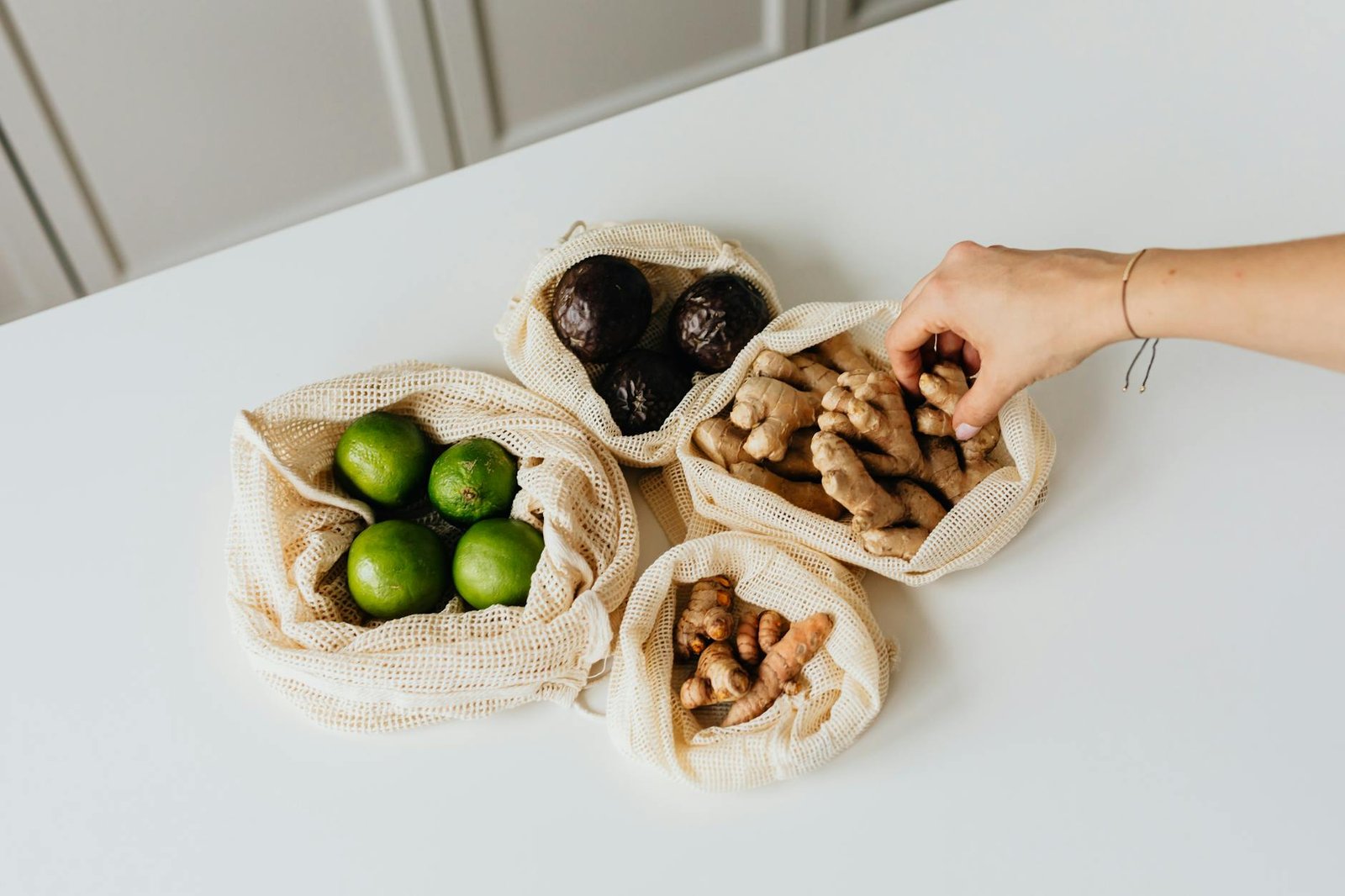Muscle soreness can leave you feeling stiff and drained after a workout, but don’t worry—there are plenty of effective ways to get sore muscle relief. Whether you’re dealing with Delayed Onset Muscle Soreness (DOMS) or just general tightness, knowing how to manage it can speed up recovery and get you back to your routine quickly. From using essential oils to cold and heat therapy, there are natural remedies that can help soothe aching muscles. Let’s dive into some science-backed methods for faster recovery and feeling your best!

The Science Behind Muscle Soreness
When you push your body during a workout, your muscles respond by getting stronger. However, this process often comes with soreness, especially after a challenging session. You might feel fine at first, but a day or two later, those muscles you worked so hard start to feel stiff and achy. This is where DOMS, or Delayed Onset Muscle Soreness, comes in. But don’t worry! Soreness is a natural part of recovery, and understanding how it works can help you manage it better.
What Exactly Is DOMS?
DOMS happens when you exercise muscles in new ways or push them harder than they’re used to. This causes tiny tears in the muscle fibers, which is completely normal. As your body repairs these micro-tears, your muscles become stronger and more resilient. It’s kind of like a natural upgrade! The downside is that this repair process leads to soreness, which usually peaks about 24-48 hours after your workout.
Why Is DOMS So Delayed?
You might wonder, “Why don’t my muscles hurt right away?” Good question! The delay is due to the inflammatory response your body triggers to repair those muscle fibers. It takes time for the chemicals that cause inflammation to reach the affected areas. Once they do, you feel the soreness. The delayed soreness is actually a sign that your body is healing and adapting to the workout.
How Long Does DOMS Last?
Good news! DOMS usually lasts no more than 3-5 days, and the soreness gradually fades. As your body becomes accustomed to your workout routine, you’ll notice that DOMS happens less often. While it can be uncomfortable, DOMS is actually a sign that you’re building stronger, healthier muscles. And as you continue to exercise, you’ll experience less severe soreness.
Managing DOMS for Sore Muscle Relief
Now that you know what’s causing the soreness, let’s talk about sore muscle relief. While you can’t completely avoid DOMS, there are ways to manage it. For starters, easing into new workouts gradually can reduce its intensity. If you’re sore, don’t skip movement altogether—gentle activities like walking or yoga can help keep your muscles from stiffening up.
Thoughts on Sore Muscle Relief
DOMS is a natural and essential part of muscle recovery. The key is to manage it wisely so it doesn’t interfere with your fitness goals. With gentle movement, proper nutrition, and heat/cold therapy, you can keep soreness at bay and get back to your workouts faster. Now that you understand the science behind muscle soreness, you’re better equipped to enjoy your fitness journey without being held back by aches and pains!
Essential Oils for Sore Muscle Relief
Dealing with post-workout soreness? You’re not alone! Luckily, essential oils offer a natural way to relieve sore muscles. They’ve been used for centuries to soothe pain and reduce inflammation. Oils like lavender, peppermint, and eucalyptus are particularly effective. Let’s explore how to incorporate these oils into your recovery routine for quick, natural relief.

Why Lavender Is a Go-To for Relaxation and Sore Muscle Relief
Lavender oil is known for its calming scent, but it’s also a great option for sore muscle relief. Its anti-inflammatory properties help reduce swelling, making it ideal after an intense workout. Simply add a few drops of lavender oil to a warm bath, and you’ll feel the relaxation melt into your muscles. The soothing heat paired with lavender’s calming effects can help loosen tight muscles and ease discomfort.
For targeted relief, you can also dilute lavender oil with a carrier oil like coconut or jojoba oil. Massage it directly into sore areas, especially before bed. This method promotes muscle relaxation and can help you sleep better, which is vital for recovery. Lavender’s gentle nature makes it a versatile option for sore muscle relief, and it’s safe for most skin types.
Peppermint Oil for a Cooling Effect
When it comes to sore muscle relief, peppermint oil is your go-to for a cooling sensation. The menthol in peppermint provides a natural cooling effect that can help reduce inflammation and numb sore muscles. You’ll feel an immediate tingle that helps to relax muscle tension.
To use peppermint oil, dilute it with a carrier oil and apply it to areas that feel particularly sore. You can even use it on your temples or neck if you’re experiencing tension headaches after a tough workout. For a refreshing full-body experience, try adding a few drops to your shower gel or body wash. The cooling effect lingers, leaving you feeling energized and less stiff.
Eucalyptus Oil for Deep Sore Muscle Relief
Eucalyptus oil is another essential oil powerhouse for sore muscle relief. Its anti-inflammatory and analgesic properties make it an excellent choice for easing muscle aches and pains. Eucalyptus also helps improve circulation, which speeds up muscle recovery.
You can add eucalyptus oil to a diffuser for an invigorating, pain-relieving aroma or mix it with a carrier oil and apply it directly to sore spots. Its refreshing scent and deep-penetrating effects make it a must-have in your post-workout recovery kit. For a full-body experience, consider adding it to a warm compress and applying it to sore muscles for fast relief.
Combining Oils for Maximum Effect
Why limit yourself to just one oil when you can combine them for even better results? Mixing lavender, peppermint, and eucalyptus oils can create a powerful blend for sore muscle relief. Lavender provides calming effects, peppermint offers cooling relief, and eucalyptus penetrates deep into muscles.
To create your own blend, mix equal parts of these essential oils with a carrier oil and store it in a small bottle. Apply the mixture to sore muscles after your workout or before bed for overnight relief. You can also add this blend to a bath for an all-over muscle-soothing experience.
Essential Oils as Part of Your Recovery Routine
Incorporating essential oils into your post-workout routine is a natural, effective way to relieve sore muscles. Whether you choose the calming power of lavender, the cooling sensation of peppermint, or the deep-penetrating relief of eucalyptus, these oils provide fast and easy relief. Don’t be afraid to experiment with different oils and blends to find what works best for you. With regular use, essential oils can become a key part of your recovery routine, helping you get back to your workouts faster and feeling great.
Anti-Inflammatory Foods to Help Heal Faster
You might already know that what you eat can affect how you feel, but did you know certain foods can actually help with sore muscle relief? Incorporating anti-inflammatory foods into your diet can speed up muscle recovery and reduce inflammation. Let’s take a look at how easy it is to include some powerful foods like turmeric and ginger to heal faster.

Turmeric: The Golden Spice for Sore Muscle Relief
Turmeric is more than just a trendy spice—it’s a powerhouse for sore muscle relief. Its active ingredient, curcumin, has potent anti-inflammatory effects. Adding turmeric to your diet can help reduce muscle inflammation after a tough workout.
For an easy way to enjoy turmeric, try making a golden latte. Simply mix turmeric powder with warm almond milk, honey, and a pinch of black pepper to enhance curcumin absorption. You can also sprinkle it on roasted vegetables or add it to soups and smoothies. It’s a simple step to take that can make a big difference in your recovery.
Ginger: A Zingy Boost for Faster Healing and Sore Muscle Relief
Ginger isn’t just for tea—it’s another star player in the world of sore muscle relief. This spicy root has been shown to reduce inflammation and muscle pain, especially after exercise.
For a quick boost, grate fresh ginger into your tea or smoothies. You can also add it to stir-fries, soups, or even salad dressings. Not only does it taste great, but it also helps you bounce back faster from muscle soreness. Ginger’s warming effect makes it perfect for chilly days, too!
Leafy Greens: Nature’s Anti-Inflammatory Powerhouses
If you’re looking for sore muscle relief, leafy greens like spinach and kale should be staples in your diet. These nutrient-packed veggies are full of vitamins and minerals that help reduce inflammation.
Toss a handful of spinach into your post-workout smoothie or enjoy a kale salad with a drizzle of olive oil (another anti-inflammatory ingredient). The more greens, the better! You’ll feel lighter, more energized, and ready for your next workout in no time.
Omega-3 Rich Foods for Long-Lasting Sore Muscle Relief
Foods rich in omega-3 fatty acids, like salmon, chia seeds, and flaxseeds, offer significant sore muscle relief benefits. Omega-3s work by reducing inflammation at a cellular level, helping you recover faster.
For an easy omega-3 boost, sprinkle flaxseeds on your oatmeal or toss chia seeds into your smoothie. If you’re a seafood lover, adding salmon to your weekly menu is a tasty way to enhance muscle recovery.
Add These Anti-Inflammatory Foods to Your Recovery Routine
Incorporating anti-inflammatory foods like turmeric, ginger, and leafy greens into your meals is a simple yet effective way to speed up muscle recovery. Whether you add turmeric to your latte, ginger to your stir-fry, or leafy greens to your smoothie, these foods will give you the sore muscle relief you need to heal faster. You’ll feel the difference, and your muscles will thank you!
Cold vs. Heat Therapy: What’s Better?
When your muscles are sore, the choice between cold or heat therapy can be confusing. Both options offer sore muscle relief, but each works in different ways. Let’s explore when to use cold, and when to opt for heat, to get the best results.
When Cold Therapy is Best
Cold therapy is ideal for acute injuries or recent muscle soreness. Applying ice reduces inflammation, numbs the area, and decreases swelling. Use cold packs immediately after a workout or injury to minimize discomfort and prevent further damage.
For effective sore muscle relief, try applying ice for 15-20 minutes at a time. Make sure to protect your skin by wrapping the ice pack in a cloth or towel. Cold therapy is your go-to for reducing pain and controlling swelling after a tough workout.
The Power of Heat Therapy for Sore Muscle Relief
On the other hand, heat therapy works wonders on stiff, tight muscles. It increases blood flow, relaxes muscle fibers, and helps muscles loosen up. Heat is great for chronic muscle pain or stiffness that lingers after the initial soreness subsides.
You can use heating pads, warm baths, or even hot towels for sore muscle relief. Just be careful not to overdo it—20 minutes of heat is usually enough to help muscles relax and recover. Warmth can be especially comforting during cold weather!
Combining Cold and Heat for Ultimate Relief
Sometimes, alternating between cold and heat therapy can provide maximum relief. Start with cold to reduce inflammation, then follow up with heat to improve circulation. This approach is particularly useful for recurring muscle pain or injuries that don’t heal right away.
Listen to Your Body
When deciding between cold or heat therapy, remember to listen to your body. If something feels better for your specific soreness, trust that instinct. Both cold and heat can be helpful tools for sore muscle relief when used correctly.
Stretching for Faster Recovery
Stretching is one of the simplest ways to promote sore muscle relief. It helps ease muscle tightness and reduces soreness after a workout. But how exactly does it help you recover faster?

Why Stretching Matters for Sore Muscle Relief
When you stretch, you increase blood flow to your muscles, improving flexibility and speeding up recovery. By loosening tight muscles, stretching also prevents stiffness, allowing you to bounce back faster from intense workouts.
Key Stretches for Sore Muscle Relief
Some stretches are particularly effective for sore muscle relief. Hamstring stretches, for instance, help release tension in your legs after running or squatting. If your upper body feels tight, try shoulder or chest stretches to ease that discomfort.
Remember, it’s important to focus on the areas you’ve worked the most. Stretch gently and avoid bouncing, as this can cause strain rather than relief.
Dynamic vs. Static Stretching
When it comes to sore muscles, both dynamic and static stretching have their place. Dynamic stretches, like leg swings or arm circles, are great for warming up. They get your muscles moving and help prevent injury.
On the other hand, static stretches—where you hold a position for 15-30 seconds—are best for post-workout recovery. This type of stretching gives your muscles time to release tension.
Stretch Consistently for Long-Term Benefits
To maximize sore muscle relief, consistency is key. Regular stretching not only speeds up recovery but also improves flexibility over time. You’ll feel less sore after future workouts and move more easily day-to-day.
Incorporating a simple stretching routine into your post-workout routine can be a game-changer. So, stretch it out and give your muscles the relief they deserve!
Sleep: The Ultimate Cure for Sore Muscles
Getting quality sleep is often overlooked but it’s one of the best ways to promote sore muscle relief. While you rest, your body works hard to repair muscle tissue and reduce inflammation. But how does this magical process happen? Let’s explore how sleep and some handy tools like grounding sheets can fast-track muscle recovery.

Why Sleep is Crucial for Sore Muscle Relief
During deep sleep, your body releases growth hormones. These hormones help repair damaged muscle fibers, which means faster recovery and less soreness after a tough workout. Without enough sleep, your body doesn’t have the time or resources to heal properly, leaving you sore and sluggish. So, if you’ve been skimping on sleep, now’s the time to prioritize it for faster recovery.
How Grounding Sheets Aid in Restorative Sleep
Here’s a little secret to better sleep—grounding sheets. These sheets connect you to the Earth’s natural energy, helping reduce inflammation and promoting deeper, more restful sleep. Studies suggest that grounding improves circulation and reduces muscle pain, speeding up the repair process overnight. By sleeping on grounding sheets, you’re giving your body a head start on healing those sore muscles.
The Importance of Sleep Cycles for Sore Muscle Relief
Each night, your body goes through multiple sleep cycles. It’s during the deeper stages of sleep that your muscles truly start to heal. In these phases, your body produces more cytokines—proteins that help fight inflammation. The more uninterrupted sleep you get, the more opportunities your muscles have to recover. On the flip side, poor sleep can leave you waking up stiff and sore.
Sleep and Inflammation Reduction
Believe it or not, sleep directly affects inflammation levels in your body. Poor sleep increases stress hormones like cortisol, which can lead to more inflammation, not less. This means more muscle pain and slower recovery times. However, good-quality sleep lowers cortisol levels, reducing inflammation naturally and helping you bounce back faster from workouts.
Tips for Improving Sleep Quality
Want to maximize sore muscle relief while you sleep? Start by creating a calming bedtime routine. This might include stretching, drinking herbal tea, or even practicing deep breathing to relax your body and mind. Next, make sure your sleep environment is comfortable—consider blackout curtains and a cozy mattress. Finally, try grounding sheets to promote restorative, anti-inflammatory sleep. This combination can significantly boost your recovery process and leave you feeling refreshed and pain-free the next day.
Thus, incorporating more rest into your routine isn’t just a luxury—it’s essential for your recovery. So, get some shut-eye and let your muscles do their thing!
Takeaway
At the end of the day, sore muscle relief starts with taking care of your body from the inside out. Prioritizing quality sleep, using anti-inflammatory foods, and applying essential oils all play a key role in reducing muscle pain and inflammation. Incorporating simple stretches into your routine can also help keep muscles flexible and reduce tension over time.
Whether you’re using heat and cold therapy or grounding sheets to enhance sleep quality, all of these practices work together to give your muscles the best chance at quick recovery. Don’t forget, it’s essential to listen to your body—when you combine rest, nutrition, and self-care, you’ll find that you recover faster and feel stronger. So, take the time to pamper those sore muscles—you deserve it!
Finally, getting sore muscles from time to time is part of an active lifestyle, but you don’t have to live with the pain. By incorporating these natural remedies, you’ll bounce back quicker, feeling better than ever. Your muscles will thank you!


One thought on “Ease the Pain: Proven Sore Muscle Relief for Fast Recovery”